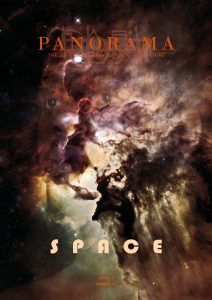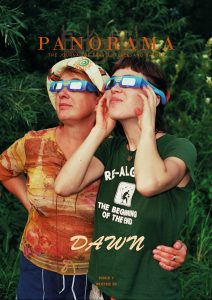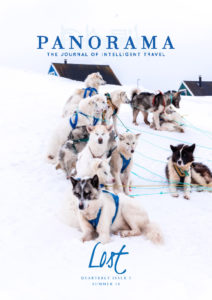
While delving into my archives recently for a series of photomontages entitled A Sense of Place, I discovered a great many pictures I’d taken in Morocco over the years that I’d forgotten about. It made me want to put together a new book, using a selection of images different from those published in my two previous books on Morocco, in 1990 and 2013. Perhaps influenced by the more cinematic approach of photomontage, this book is made up of a series of sequences or short trips, which serve as variations on the same theme: the fascination that this country has exerted on me for more than fifty years.
When I visited Morocco for the first time, in the 1970s, it was love at first sight. I felt like I’d stepped into a Brueghel painting. Then I went back to see some of those places again and relive my original emotions. The first thing that enchanted me was the orderly nature of things and life in the countryside. There was a splendid harmony between shapes, colours, everyday activities and nature. The importance of family, community and faith also fascinated me. In rural Morocco, it’s routine and tradition that dominate, indicating what everyone should be and do, according to religious or secular rules. I started by taking photographs that expressed this orderliness. Then I deepened the relationship. It’s not easy to take pictures there. I often ran into refusals, from men as well as women. The moment the shutter clicks can be interpreted, or indeed experienced, as an act of aggression. One particular image in this book reflects this idea: a woman crouching next to a goat was getting up to leave. She didn’t want to show her face, so she turned around. In doing so she unwittingly gave me a wonderful gift: a view of the child on her back, whose presence I had no idea about. In fact, the way that people hide their faces gives them great visual power: the physical impact of a presence without a face, reduced to the pure form of a draped and covered body. It’s a different way of being present, with no labels or identity. Moreover, from my perspective, I don’t believe I’m ‘communicating’ directly with the people I photograph. Concentration and distance are vital to me.
If there is ‘communication’ there, it occurs via a whole mass of visuals, including people but also buildings, fabrics, animals, light and more. Taking a photograph means both seeking out contact and avoiding it, being completely there yet not there at the same time. What’s more, I’m a rather shy person, especially when confronted by the women who play a key role in Moroccan life. Their refusal to be photographed is based on cultural tradition. I also like the fact that these covered faces unwittingly reflect my own presence, as well as my status as an outsider, which I completely acknowledge. In addition, there is an element of playfulness in this evasiveness (as seen in the image of young women in blue and pink who are laughing behind their hands). But this resistance is also an expression of a strong personality, a Moroccan sense of pride that I find very inspiring.
The way I work might seem rather like scouting for locations, in the filmmaking sense, but most of all it reflects an obsession: the quest to relive a memorable moment in a place I have visited before, a longing to experience it again with even greater intensity. This is how I worked when I started out. Nowadays, I am more likely to throw myself into my subject – the chaos of a street in Paris, New York or Tokyo, for example – and try to bring order to it immediately. In Morocco, and especially in rural areas rather than urban spaces, it felt as if the same actions and the same events were repeated from one day to the next, even from one year to the next. Once, in Asilah, I took a photograph in the street of a man wearing a fez with a serious expression on his face; back in France, I retained that image as one of the strongest from my visit. A year or two later, I went back to Asilah at the same time of year, to the same street, perhaps even at the same time of day, and I couldn’t believe my eyes: there was the exact same man, wearing the same fez and with the same serious expression on his face as the first time! I had a startling sense that I was seeing my photograph come to life, as if the man had just stolen an image from me that I knew my heart – even though the opposite was the case.
In the 1970s, in my VW camper van, I made the same journey through Morocco many times, seeing places as varied as the High Atlas mountains and the desert, the Atlantic coast and the Mediterranean shore. The people were never the same; from one tribal community or town to the next, they had different clothes and different customs, and different reactions to a stranger, much less a photographer. In this way, I learned how to behave when taking pictures in Marrakech or Fès, Essaouira or Erfoud: each place had its own tricks that would allow me to be accepted, up to a point.
It was there that I eventually learned how to get close to people to take pictures. Initially struck by the harmony that existed between the landscape and its people, I tended to work with lenses that ‘compressed’ foreground and background into a single image. Next, I slowly learned to photograph people from close up while remaining relatively unnoticed, forgetting about my physical presence in order to concentrate solely on my emotions and my photographic instincts. I prefer to pass unseen so that people show more of themselves; however, I also enjoy surprises, such as a figure walking into the image, a miraculous and unexpected moment that takes my breath away, the very physical phenomenon of my photograph suddenly becoming real. When I’m out taking photographs, it’s like I’m wrestling with reality, entering a sort of trance in order to capture an image or perhaps lose it completely. It’s inside this conflict that I feel most at home.
Ultimately, this book about Morocco probably says more about me than it does about the country itself. It’s definitely not a work of photojournalism – a craft that certainly serves a purpose, but doesn’t interest me much. Nor do I claim to show the whole of Morocco, or to have ‘covered’ the country like a reporter covers an event. What’s important to me is that each photograph has its own power and the images can be linked together, read as a hymn of praise rather than as a story or a travel diary. In fact, for me, going deeper into a subject such as Morocco feels like an experiment, a form of discipline, and much less like a piece of reportage, the techniques and constraints of which I try to avoid. Social and political issues, for example, are not foregrounded in my images. I don’t ignore poverty, unemployment, or the cities expanding constantly through the growth of shanty towns. But that’s another story, a different way of approaching things. You don’t critique a novelist for not being interested in things that aren’t part of the story. The same ought to be true of photography, which is often too attached to recording an ‘expected objective reality’. Nonetheless, I hope my photographs communicate something fundamental about Morocco. The subject remains extremely important to me; it’s not just a simple pretext for a purely aesthetic approach. It may not be the paramount concern, but it’s the element that forces you to step outside of yourself so that you can try to understand a different reality. Everything’s a matter of balance between reality and yourself.
Those great earthen walls, bleached by the sun or whitewashed with lime, are clearly the sets in a theatre of the imagination. These omnipresent walls that offer protection from heat and shelter for people’s secrets and private lives have their own personality, a very powerful presence. To me, they bear the palpable imprint of Morocco. Shadows and light, walls and weavings – these visual elements embody the essence of Moroccan life, which is now rapidly changing.
The thing that matters most to me in photography, and in art in general, is the sense of sharing the experiences of the artist or creator, of being with them, of seeing what they have seen through their eyes. Morocco has bewitched me, and I want this book to be an expression of that magic.













